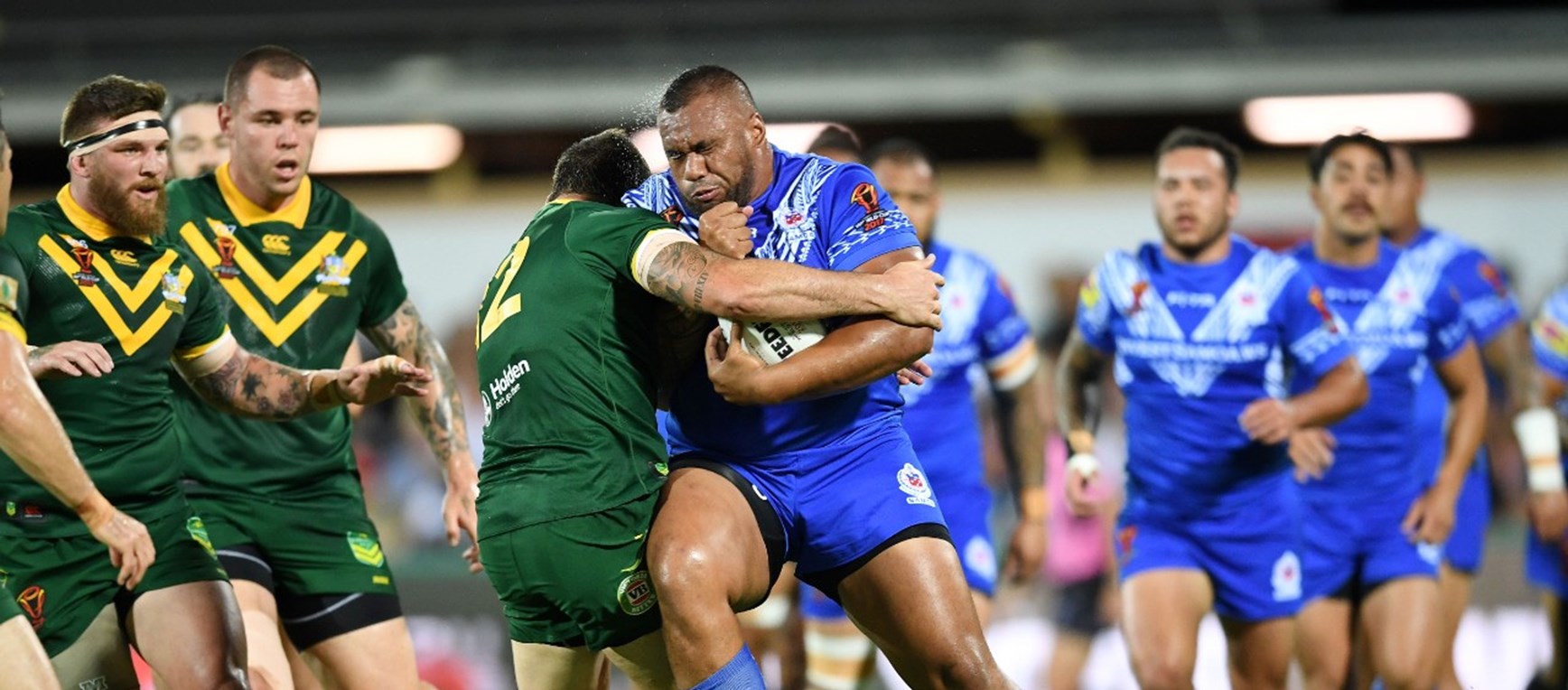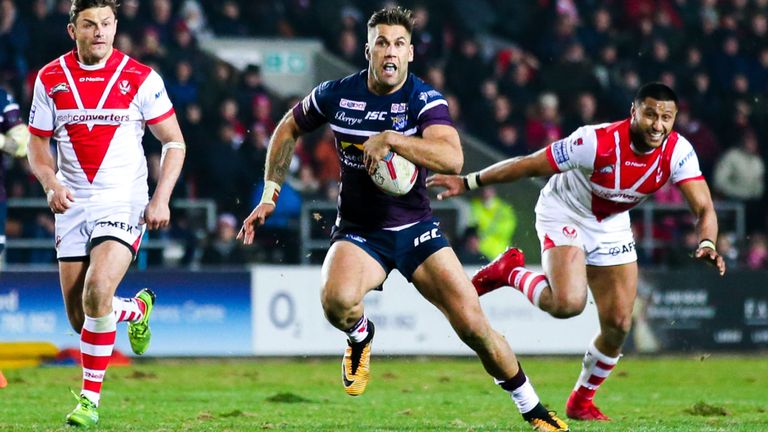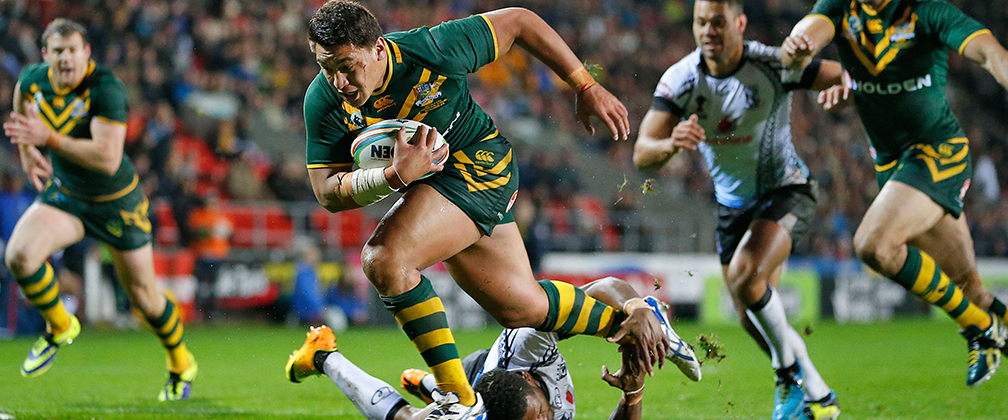Rugby League is a game which is quite popular among sports lover. The game has owned the title of “National sport” at Papua New Guinea. It was originated from the state of Queensland in the year 1895. Slowly or steadily it has owned a large majority of popularity.
In a rectangular field, thirteen players of the opposite team tried their best to achieve the highest score. The players show their enthusiasm physically as well as mentally. This game is performed on an international level and is administrated by the Rugby League International Federation. The very first International league was performed in France in the year 1954.
Rugby league is known as the modern football which is played at outside areas or on a grass field. Attacking or defending each other by opposing team is the main target of players. The game is played between two teams with equivalent team members, i.e., thirteen players in the ground at a time. As this game is considered as a full-contact sport; thus dimensions of the ball is approved by the Rugby League Commission.
Some specific rules should be followed by the players to achieve the golden point. The time specification is; rugby league football game is divided into two forty-minute halves. Hence two opposite come together in a rectangular grass field. Dimensions of an area are sectioned as the length is 120 meters, 58–68 meters width depending on the individual ground.
The Basic Strategy of Rugby League
- Scoring the highest points by giving a tough competition to a competitor is a basic target of two different teams.
- Six tackles are given to the opposite teams so that can achieve a high score. In case the team does not score a point between six tackles; then a ball is handed over to the opposition team.
- It is an energetic sport which includes passing or catching the ball with hands, acceleration, changing directions, a declaration as well as kicking.
Specifications of Rugby League
Time:
The game is divided into two halves of 40 minutes, in which injury time is also added at the end. With the break of 10-minutes between two halves players of both the team can interchange their ends; hence can defend or attack in another half. The indication of break or start or finish of two halves is given by hooter or through a whistle. The scores will only be considered if played after the sound of whistle or hooter.
The halftime will immediately be ended once the ball goes out of touch. Once a tackle is made than; the time can only be extended in two situations, i.e., penalty kick or a kick at goal.
Dimensions of Ball:
The ball used for Rugby league is in oval-shaped; which is quite different from the usual balls. It is around 280-300mm in length. The weight of the full-size ball is between 383 to 440 grams.
Pitch:
A preferable field which is recommended for Rugby League is grassy ground. From a safety perspective; it can provide less harm to players while attacking or defending. Usually, the game is played in a ground of 100m length and 68m width. Juniors or players less than 18 plays in smaller grounds; as in this game, two opposite teams are involved so specific marking is created to indicate the different lines such as deadlines, goal line, and halfway line. A specific line is there from where players can restart after a break.
Punches to the head/striking
After deliberation by the Laws Committee, striking (defined as contact being made to the head which is deemed by the match officials) will be included as an automatic sin bin in the updated sin bin section of the match officials’ policy.
Shot clock
As previously announced, teams will now have only 30 seconds to restart the match at a scrum and 25 seconds for a drop-out.
Golden point
Again as previously announced, golden point extra-time will be introduced to the Championship and League 1 in 2020, with each team taking one competition point from a match that is drawn at full-time, and an additional point available to the first team to score a point in two five-minute periods of extra-time.
Squad Declaration
As announced in December, teams will now be required to name a 21-player squad at noon two days before each fixture (rather than a 19-player squad, as previously); and if they include any players from outside that 21 in their matchday 17, they will lose one of the eight interchanges permitted in each match.
Different Modes of Playing Rugby League
There are some initial modes which should be kept in mind:
- Once the game has started the players those who are onside can kick the ball in any direction whether towards opponents’ or dead ball line.
- A player who holds the ball can be tackled by its opposing players. In this case, the player can run or kick the ball to his team members. One can either prevent a ball by running or passing into different hands of the same team.
- The main objective of a game is to ground the ball in the opponents’ or to kick the ball over the opponents’ to achieve a high score. The players will achieve two points in case of conversion goal or penalty goals. Hence if there will be a drop goal, then it will be counted as one point. The winner of the team will be on the basis of highest scoring of points.
The Positioning of Players
- Each player of rugby team has a certain specific position. Eight players occupy the forward space and seven at the back. The forward’s players are the one who forms the scrum.
- The back players are equally divided into three particular groups such as the half-backs, three-quarter backs, as well as full-backs.
Holding the ball
The players who are highly skilled in holding the ball have to move in all around areas of the field. Thus they remain prepared for catching as well as passing the ball.
Catching the ball
Attentiveness is the basic skill which should be available in the players who are responsible for catching the ball. You never know or can predict the heights, speed or angle of a ball so have to be prepared. Sometimes it can be like rolling, spinning, bouncing, or falling, so it’s better to keep your eyes and ear open.
Passing the ball
Players of both the team face this condition of passing the ball either for attending or defending. To keep the ball away from opponents the players pass the ball to their members.
Kicking the ball
This condition arises while starting the game such as to score points, find touch, gain ground, cause trouble, and break defenses.
This is an interesting game which requires attentiveness, stamina as well as good will-power. The players have to remain prepared for the activities such as passing a ball, kicking or catching the ball.
Also Check :











